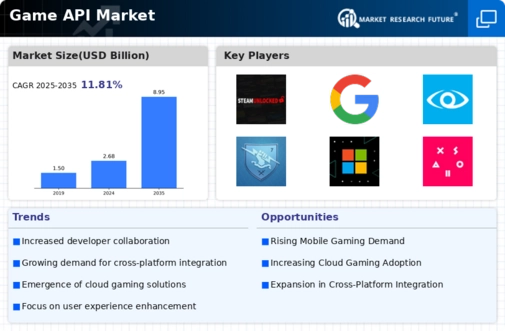-
EXECUTIVE SUMMARY
-
Market
-
Overview
-
Key Findings
-
Market Segmentation
-
Competitive Landscape
-
1.5.
-
Challenges and Opportunities
-
Future Outlook
-
2.
-
MARKET INTRODUCTION
-
Definition
-
Scope of the study
- Research
- Assumption
- Limitations
-
Objective
-
RESEARCH METHODOLOGY
-
3.1.
-
Overview
-
Data Mining
-
Secondary Research
-
Primary Research
- Breakdown of Primary Respondents
-
3.4.1.
-
Primary Interviews and Information Gathering Process
-
Forecasting Model
-
Market Size Estimation
- Bottom-Up Approach
-
3.6.2.
-
Top-Down Approach
-
Data Triangulation
-
Validation
-
MARKET DYNAMICS
-
Overview
-
Drivers
-
Restraints
-
Opportunities
-
MARKET FACTOR ANALYSIS
-
Value chain Analysis
- Bargaining Power of Suppliers
- Threat of New Entrants
- Threat
- Intensity of Rivalry
-
5.2.
-
Porter''s Five Forces Analysis
-
5.2.2.
-
Bargaining Power of Buyers
-
of Substitutes
-
COVID-19 Impact Analysis
- Market Impact Analysis
- Regional Impact
- Opportunity
-
and Threat Analysis
-
Game API Market, BY Application (USD
-
Billion)
-
Game Development
-
Game Analytics
-
In-Game Purchasing
-
6.4.
-
Multiplayer Gaming
-
Game API Market, BY Deployment Type (USD Billion)
-
7.1.
-
Cloud-Based
-
On-Premises
-
Game API Market, BY Game Type (USD
-
Billion)
-
Mobile Games
-
PC Games
-
Console Games
-
9.
-
Game API Market, BY End Use (USD Billion)
-
Developers
-
Publishers
-
Game Studios
-
Game API Market, BY Regional (USD Billion)
-
10.1.
-
North America
-
10.4.1.
-
Brazil
-
10.5.3.
-
Rest of MEA
-
US
-
Canada
-
Europe
- Germany
- UK
- France
- Russia
- Italy
- Spain
- Rest of Europe
-
APAC
- China
- India
- Japan
- South Korea
- Malaysia
- Thailand
- Indonesia
- Rest of APAC
-
South America
- Mexico
- Argentina
- Rest of South America
-
MEA
- GCC Countries
- South Africa
-
Competitive Landscape
-
Overview
-
Competitive
-
Analysis
-
Market share Analysis
-
Major Growth Strategy in the Game
-
API Market
-
Competitive Benchmarking
-
Leading Players in Terms
-
of Number of Developments in the Game API Market
-
Key developments and growth
- New Product Launch/Service Deployment
- Merger
- Joint Ventures
-
strategies
-
& Acquisitions
-
Major Players Financial
- Sales and Operating Income
- Major Players R&D
-
Matrix
-
Expenditure. 2023
-
Company Profiles
-
Steam
- Financial
- Products Offered
- Key Developments
- SWOT
- Key Strategies
-
Overview
-
Analysis
-
Google
- Financial Overview
- Key Developments
- SWOT Analysis
-
12.2.2.
-
Products Offered
-
12.2.5.
-
Key Strategies
-
CryEngine
- Financial Overview
- Key Developments
- SWOT Analysis
-
12.3.2.
-
Products Offered
-
12.3.5.
-
Key Strategies
-
Bungie
- Financial Overview
- Products Offered
- SWOT Analysis
- Key Strategies
- Financial Overview
- Products Offered
- Key
- SWOT Analysis
- Key Strategies
- Financial Overview
- Products Offered
- Key
- SWOT Analysis
- Key Strategies
- Financial Overview
- Products Offered
- Key
- SWOT Analysis
- Key Strategies
- Financial Overview
- Products Offered
- SWOT Analysis
- Key Strategies
- Financial Overview
- Products Offered
- Key
- SWOT Analysis
- Key Strategies
- Financial Overview
- Products Offered
- SWOT Analysis
- Key Strategies
- Financial Overview
- Products Offered
- SWOT Analysis
- Key Strategies
- Financial Overview
- Products Offered
- SWOT Analysis
- Key Strategies
- Financial Overview
- Products Offered
- SWOT Analysis
- Key Strategies
- Financial Overview
- Products Offered
- SWOT Analysis
- Key Strategies
- Financial Overview
- Products Offered
- SWOT Analysis
- Key Strategies
-
12.4.3.
-
Key Developments
-
12.5.
-
PlayFab
-
Developments
-
12.6.
-
Xsolla
-
Developments
-
12.7.
-
IBM
-
Developments
-
12.8.
-
Epic Games
-
12.8.3.
-
Key Developments
-
12.9.
-
Photon
-
Developments
-
12.10.
-
Beamdog
-
12.10.3.
-
Key Developments
-
12.11.
-
Heroes of the Storm
-
12.11.3.
-
Key Developments
-
12.12.
-
Microsoft
-
12.12.3.
-
Key Developments
-
12.13.
-
GameSparks
-
12.13.3.
-
Key Developments
-
12.14.
-
Amazon
-
12.14.3.
-
Key Developments
-
12.15.
-
Unity Technologies
-
12.15.3.
-
Key Developments
-
13.
-
Appendix
-
References
-
Related Reports
-
LIST Of tables
-
Table
-
LIST OF ASSUMPTIONS
-
North America Game API Market SIZE ESTIMATES
-
& FORECAST, BY APPLICATION, 2019-2032 (USD Billions)
-
North America Game API
-
Market SIZE ESTIMATES & FORECAST, BY DEPLOYMENT TYPE, 2019-2032 (USD Billions)
-
North America Game API Market SIZE ESTIMATES & FORECAST, BY
-
GAME TYPE, 2019-2032 (USD Billions)
-
North America Game API Market
-
SIZE ESTIMATES & FORECAST, BY END USE, 2019-2032 (USD Billions)
-
North
-
America Game API Market SIZE ESTIMATES & FORECAST, BY REGIONAL, 2019-2032 (USD
-
Billions)
-
US Game API Market SIZE ESTIMATES & FORECAST, BY APPLICATION,
-
US Game API Market SIZE ESTIMATES &
-
FORECAST, BY DEPLOYMENT TYPE, 2019-2032 (USD Billions)
-
US Game API Market SIZE
-
ESTIMATES & FORECAST, BY GAME TYPE, 2019-2032 (USD Billions)
-
Table 10.
-
US Game API Market SIZE ESTIMATES & FORECAST, BY END USE, 2019-2032 (USD Billions)
-
US Game API Market SIZE ESTIMATES & FORECAST, BY REGIONAL,
-
Canada Game API Market SIZE ESTIMATES
-
& FORECAST, BY APPLICATION, 2019-2032 (USD Billions)
-
Canada Game API Market
-
SIZE ESTIMATES & FORECAST, BY DEPLOYMENT TYPE, 2019-2032 (USD Billions)
-
Table
-
Canada Game API Market SIZE ESTIMATES & FORECAST, BY GAME TYPE, 2019-2032
-
(USD Billions)
-
Canada Game API Market SIZE ESTIMATES & FORECAST,
-
BY END USE, 2019-2032 (USD Billions)
-
Canada Game API Market SIZE
-
ESTIMATES & FORECAST, BY REGIONAL, 2019-2032 (USD Billions)
-
Table 17.
-
Europe Game API Market SIZE ESTIMATES & FORECAST, BY APPLICATION, 2019-2032
-
(USD Billions)
-
Europe Game API Market SIZE ESTIMATES & FORECAST,
-
BY DEPLOYMENT TYPE, 2019-2032 (USD Billions)
-
Europe Game API Market
-
SIZE ESTIMATES & FORECAST, BY GAME TYPE, 2019-2032 (USD Billions)
-
Table
-
Europe Game API Market SIZE ESTIMATES & FORECAST, BY END USE, 2019-2032
-
(USD Billions)
-
Europe Game API Market SIZE ESTIMATES & FORECAST,
-
BY REGIONAL, 2019-2032 (USD Billions)
-
Germany Game API Market SIZE
-
ESTIMATES & FORECAST, BY APPLICATION, 2019-2032 (USD Billions)
-
Table 23.
-
Germany Game API Market SIZE ESTIMATES & FORECAST, BY DEPLOYMENT TYPE, 2019-2032
-
(USD Billions)
-
Germany Game API Market SIZE ESTIMATES & FORECAST,
-
BY GAME TYPE, 2019-2032 (USD Billions)
-
Germany Game API Market SIZE
-
ESTIMATES & FORECAST, BY END USE, 2019-2032 (USD Billions)
-
Table 26.
-
Germany Game API Market SIZE ESTIMATES & FORECAST, BY REGIONAL, 2019-2032 (USD
-
Billions)
-
UK Game API Market SIZE ESTIMATES & FORECAST, BY APPLICATION,
-
UK Game API Market SIZE ESTIMATES &
-
FORECAST, BY DEPLOYMENT TYPE, 2019-2032 (USD Billions)
-
UK Game API Market SIZE
-
ESTIMATES & FORECAST, BY GAME TYPE, 2019-2032 (USD Billions)
-
Table 30.
-
UK Game API Market SIZE ESTIMATES & FORECAST, BY END USE, 2019-2032 (USD Billions)
-
UK Game API Market SIZE ESTIMATES & FORECAST, BY REGIONAL,
-
France Game API Market SIZE ESTIMATES
-
& FORECAST, BY APPLICATION, 2019-2032 (USD Billions)
-
France Game API Market
-
SIZE ESTIMATES & FORECAST, BY DEPLOYMENT TYPE, 2019-2032 (USD Billions)
-
Table
-
France Game API Market SIZE ESTIMATES & FORECAST, BY GAME TYPE, 2019-2032
-
(USD Billions)
-
France Game API Market SIZE ESTIMATES & FORECAST,
-
BY END USE, 2019-2032 (USD Billions)
-
France Game API Market SIZE
-
ESTIMATES & FORECAST, BY REGIONAL, 2019-2032 (USD Billions)
-
Table 37.
-
Russia Game API Market SIZE ESTIMATES & FORECAST, BY APPLICATION, 2019-2032
-
(USD Billions)
-
Russia Game API Market SIZE ESTIMATES & FORECAST,
-
BY DEPLOYMENT TYPE, 2019-2032 (USD Billions)
-
Russia Game API Market
-
SIZE ESTIMATES & FORECAST, BY GAME TYPE, 2019-2032 (USD Billions)
-
Table
-
Russia Game API Market SIZE ESTIMATES & FORECAST, BY END USE, 2019-2032
-
(USD Billions)
-
Russia Game API Market SIZE ESTIMATES & FORECAST,
-
BY REGIONAL, 2019-2032 (USD Billions)
-
Italy Game API Market SIZE
-
ESTIMATES & FORECAST, BY APPLICATION, 2019-2032 (USD Billions)
-
Table 43.
-
Italy Game API Market SIZE ESTIMATES & FORECAST, BY DEPLOYMENT TYPE, 2019-2032
-
(USD Billions)
-
Italy Game API Market SIZE ESTIMATES & FORECAST,
-
BY GAME TYPE, 2019-2032 (USD Billions)
-
Italy Game API Market SIZE
-
ESTIMATES & FORECAST, BY END USE, 2019-2032 (USD Billions)
-
Table 46.
-
Italy Game API Market SIZE ESTIMATES & FORECAST, BY REGIONAL, 2019-2032 (USD
-
Billions)
-
Spain Game API Market SIZE ESTIMATES & FORECAST, BY APPLICATION,
-
Spain Game API Market SIZE ESTIMATES &
-
FORECAST, BY DEPLOYMENT TYPE, 2019-2032 (USD Billions)
-
Spain Game API Market
-
SIZE ESTIMATES & FORECAST, BY GAME TYPE, 2019-2032 (USD Billions)
-
Table
-
Spain Game API Market SIZE ESTIMATES & FORECAST, BY END USE, 2019-2032 (USD
-
Billions)
-
Spain Game API Market SIZE ESTIMATES & FORECAST, BY REGIONAL,
-
Rest of Europe Game API Market SIZE ESTIMATES
-
& FORECAST, BY APPLICATION, 2019-2032 (USD Billions)
-
Rest of Europe Game
-
API Market SIZE ESTIMATES & FORECAST, BY DEPLOYMENT TYPE, 2019-2032 (USD Billions)
-
Rest of Europe Game API Market SIZE ESTIMATES & FORECAST,
-
BY GAME TYPE, 2019-2032 (USD Billions)
-
Rest of Europe Game API Market
-
SIZE ESTIMATES & FORECAST, BY END USE, 2019-2032 (USD Billions)
-
Table 56.
-
Rest of Europe Game API Market SIZE ESTIMATES & FORECAST, BY REGIONAL, 2019-2032
-
(USD Billions)
-
APAC Game API Market SIZE ESTIMATES & FORECAST,
-
BY APPLICATION, 2019-2032 (USD Billions)
-
APAC Game API Market
-
SIZE ESTIMATES & FORECAST, BY DEPLOYMENT TYPE, 2019-2032 (USD Billions)
-
Table
-
APAC Game API Market SIZE ESTIMATES & FORECAST, BY GAME TYPE, 2019-2032
-
(USD Billions)
-
APAC Game API Market SIZE ESTIMATES & FORECAST,
-
BY END USE, 2019-2032 (USD Billions)
-
APAC Game API Market SIZE ESTIMATES
-
& FORECAST, BY REGIONAL, 2019-2032 (USD Billions)
-
China Game API Market
-
SIZE ESTIMATES & FORECAST, BY APPLICATION, 2019-2032 (USD Billions)
-
Table
-
China Game API Market SIZE ESTIMATES & FORECAST, BY DEPLOYMENT TYPE, 2019-2032
-
(USD Billions)
-
China Game API Market SIZE ESTIMATES & FORECAST,
-
BY GAME TYPE, 2019-2032 (USD Billions)
-
China Game API Market SIZE
-
ESTIMATES & FORECAST, BY END USE, 2019-2032 (USD Billions)
-
Table 66.
-
China Game API Market SIZE ESTIMATES & FORECAST, BY REGIONAL, 2019-2032 (USD
-
Billions)
-
India Game API Market SIZE ESTIMATES & FORECAST, BY APPLICATION,
-
India Game API Market SIZE ESTIMATES &
-
FORECAST, BY DEPLOYMENT TYPE, 2019-2032 (USD Billions)
-
India Game API Market
-
SIZE ESTIMATES & FORECAST, BY GAME TYPE, 2019-2032 (USD Billions)
-
Table
-
India Game API Market SIZE ESTIMATES & FORECAST, BY END USE, 2019-2032 (USD
-
Billions)
-
India Game API Market SIZE ESTIMATES & FORECAST, BY REGIONAL,
-
Japan Game API Market SIZE ESTIMATES &
-
FORECAST, BY APPLICATION, 2019-2032 (USD Billions)
-
Japan Game API Market
-
SIZE ESTIMATES & FORECAST, BY DEPLOYMENT TYPE, 2019-2032 (USD Billions)
-
Table
-
Japan Game API Market SIZE ESTIMATES & FORECAST, BY GAME TYPE, 2019-2032
-
(USD Billions)
-
Japan Game API Market SIZE ESTIMATES & FORECAST,
-
BY END USE, 2019-2032 (USD Billions)
-
Japan Game API Market SIZE
-
ESTIMATES & FORECAST, BY REGIONAL, 2019-2032 (USD Billions)
-
Table 77.
-
South Korea Game API Market SIZE ESTIMATES & FORECAST, BY APPLICATION, 2019-2032
-
(USD Billions)
-
South Korea Game API Market SIZE ESTIMATES & FORECAST,
-
BY DEPLOYMENT TYPE, 2019-2032 (USD Billions)
-
South Korea Game API
-
Market SIZE ESTIMATES & FORECAST, BY GAME TYPE, 2019-2032 (USD Billions)
-
Table
-
South Korea Game API Market SIZE ESTIMATES & FORECAST, BY END USE, 2019-2032
-
(USD Billions)
-
South Korea Game API Market SIZE ESTIMATES & FORECAST,
-
BY REGIONAL, 2019-2032 (USD Billions)
-
Malaysia Game API Market SIZE
-
ESTIMATES & FORECAST, BY APPLICATION, 2019-2032 (USD Billions)
-
Table 83.
-
Malaysia Game API Market SIZE ESTIMATES & FORECAST, BY DEPLOYMENT TYPE, 2019-2032
-
(USD Billions)
-
Malaysia Game API Market SIZE ESTIMATES & FORECAST,
-
BY GAME TYPE, 2019-2032 (USD Billions)
-
Malaysia Game API Market SIZE
-
ESTIMATES & FORECAST, BY END USE, 2019-2032 (USD Billions)
-
Table 86.
-
Malaysia Game API Market SIZE ESTIMATES & FORECAST, BY REGIONAL, 2019-2032 (USD
-
Billions)
-
Thailand Game API Market SIZE ESTIMATES & FORECAST, BY APPLICATION,
-
Thailand Game API Market SIZE ESTIMATES
-
& FORECAST, BY DEPLOYMENT TYPE, 2019-2032 (USD Billions)
-
Table 89.
-
Thailand Game API Market SIZE ESTIMATES & FORECAST, BY GAME TYPE, 2019-2032
-
(USD Billions)
-
Thailand Game API Market SIZE ESTIMATES & FORECAST,
-
BY END USE, 2019-2032 (USD Billions)
-
Thailand Game API Market SIZE
-
ESTIMATES & FORECAST, BY REGIONAL, 2019-2032 (USD Billions)
-
Table 92.
-
Indonesia Game API Market SIZE ESTIMATES & FORECAST, BY APPLICATION, 2019-2032
-
(USD Billions)
-
Indonesia Game API Market SIZE ESTIMATES & FORECAST,
-
BY DEPLOYMENT TYPE, 2019-2032 (USD Billions)
-
Indonesia Game API Market
-
SIZE ESTIMATES & FORECAST, BY GAME TYPE, 2019-2032 (USD Billions)
-
Table
-
Indonesia Game API Market SIZE ESTIMATES & FORECAST, BY END USE, 2019-2032
-
(USD Billions)
-
Indonesia Game API Market SIZE ESTIMATES & FORECAST,
-
BY REGIONAL, 2019-2032 (USD Billions)
-
Rest of APAC Game API Market
-
SIZE ESTIMATES & FORECAST, BY APPLICATION, 2019-2032 (USD Billions)
-
Table
-
Rest of APAC Game API Market SIZE ESTIMATES & FORECAST, BY DEPLOYMENT TYPE,
-
Rest of APAC Game API Market SIZE ESTIMATES
-
& FORECAST, BY GAME TYPE, 2019-2032 (USD Billions)
-
Rest of APAC Game API
-
Market SIZE ESTIMATES & FORECAST, BY END USE, 2019-2032 (USD Billions)
-
Table
-
Rest of APAC Game API Market SIZE ESTIMATES & FORECAST, BY REGIONAL, 2019-2032
-
(USD Billions)
-
South America Game API Market SIZE ESTIMATES &
-
FORECAST, BY APPLICATION, 2019-2032 (USD Billions)
-
South America Game
-
API Market SIZE ESTIMATES & FORECAST, BY DEPLOYMENT TYPE, 2019-2032 (USD Billions)
-
South America Game API Market SIZE ESTIMATES & FORECAST,
-
BY GAME TYPE, 2019-2032 (USD Billions)
-
South America Game API Market
-
SIZE ESTIMATES & FORECAST, BY END USE, 2019-2032 (USD Billions)
-
Table 106.
-
South America Game API Market SIZE ESTIMATES & FORECAST, BY REGIONAL, 2019-2032
-
(USD Billions)
-
Brazil Game API Market SIZE ESTIMATES & FORECAST,
-
BY APPLICATION, 2019-2032 (USD Billions)
-
Brazil Game API Market
-
SIZE ESTIMATES & FORECAST, BY DEPLOYMENT TYPE, 2019-2032 (USD Billions)
-
Table
-
Brazil Game API Market SIZE ESTIMATES & FORECAST, BY GAME TYPE, 2019-2032
-
(USD Billions)
-
Brazil Game API Market SIZE ESTIMATES & FORECAST,
-
BY END USE, 2019-2032 (USD Billions)
-
Brazil Game API Market SIZE
-
ESTIMATES & FORECAST, BY REGIONAL, 2019-2032 (USD Billions)
-
Table 112.
-
Mexico Game API Market SIZE ESTIMATES & FORECAST, BY APPLICATION, 2019-2032
-
(USD Billions)
-
Mexico Game API Market SIZE ESTIMATES & FORECAST,
-
BY DEPLOYMENT TYPE, 2019-2032 (USD Billions)
-
Mexico Game API Market
-
SIZE ESTIMATES & FORECAST, BY GAME TYPE, 2019-2032 (USD Billions)
-
Table
-
Mexico Game API Market SIZE ESTIMATES & FORECAST, BY END USE, 2019-2032
-
(USD Billions)
-
Mexico Game API Market SIZE ESTIMATES & FORECAST,
-
BY REGIONAL, 2019-2032 (USD Billions)
-
Argentina Game API Market
-
SIZE ESTIMATES & FORECAST, BY APPLICATION, 2019-2032 (USD Billions)
-
Table
-
Argentina Game API Market SIZE ESTIMATES & FORECAST, BY DEPLOYMENT TYPE,
-
Argentina Game API Market SIZE ESTIMATES
-
& FORECAST, BY GAME TYPE, 2019-2032 (USD Billions)
-
Argentina Game API
-
Market SIZE ESTIMATES & FORECAST, BY END USE, 2019-2032 (USD Billions)
-
Table
-
Argentina Game API Market SIZE ESTIMATES & FORECAST, BY REGIONAL, 2019-2032
-
(USD Billions)
-
Rest of South America Game API Market SIZE ESTIMATES
-
& FORECAST, BY APPLICATION, 2019-2032 (USD Billions)
-
Rest of South America
-
Game API Market SIZE ESTIMATES & FORECAST, BY DEPLOYMENT TYPE, 2019-2032 (USD
-
Billions)
-
Rest of South America Game API Market SIZE ESTIMATES & FORECAST,
-
BY GAME TYPE, 2019-2032 (USD Billions)
-
Rest of South America Game
-
API Market SIZE ESTIMATES & FORECAST, BY END USE, 2019-2032 (USD Billions)
-
Table
-
Rest of South America Game API Market SIZE ESTIMATES & FORECAST, BY REGIONAL,
-
MEA Game API Market SIZE ESTIMATES &
-
FORECAST, BY APPLICATION, 2019-2032 (USD Billions)
-
MEA Game API Market
-
SIZE ESTIMATES & FORECAST, BY DEPLOYMENT TYPE, 2019-2032 (USD Billions)
-
Table
-
MEA Game API Market SIZE ESTIMATES & FORECAST, BY GAME TYPE, 2019-2032
-
(USD Billions)
-
MEA Game API Market SIZE ESTIMATES & FORECAST,
-
BY END USE, 2019-2032 (USD Billions)
-
MEA Game API Market SIZE ESTIMATES
-
& FORECAST, BY REGIONAL, 2019-2032 (USD Billions)
-
GCC Countries Game
-
API Market SIZE ESTIMATES & FORECAST, BY APPLICATION, 2019-2032 (USD Billions)
-
GCC Countries Game API Market SIZE ESTIMATES & FORECAST,
-
BY DEPLOYMENT TYPE, 2019-2032 (USD Billions)
-
GCC Countries Game
-
API Market SIZE ESTIMATES & FORECAST, BY GAME TYPE, 2019-2032 (USD Billions)
-
GCC Countries Game API Market SIZE ESTIMATES & FORECAST,
-
BY END USE, 2019-2032 (USD Billions)
-
GCC Countries Game API Market
-
SIZE ESTIMATES & FORECAST, BY REGIONAL, 2019-2032 (USD Billions)
-
Table
-
South Africa Game API Market SIZE ESTIMATES & FORECAST, BY APPLICATION,
-
South Africa Game API Market SIZE ESTIMATES
-
& FORECAST, BY DEPLOYMENT TYPE, 2019-2032 (USD Billions)
-
Table 139.
-
South Africa Game API Market SIZE ESTIMATES & FORECAST, BY GAME TYPE, 2019-2032
-
(USD Billions)
-
South Africa Game API Market SIZE ESTIMATES &
-
FORECAST, BY END USE, 2019-2032 (USD Billions)
-
South Africa Game API
-
Market SIZE ESTIMATES & FORECAST, BY REGIONAL, 2019-2032 (USD Billions)
-
Table
-
Rest of MEA Game API Market SIZE ESTIMATES & FORECAST, BY APPLICATION,
-
Rest of MEA Game API Market SIZE ESTIMATES
-
& FORECAST, BY DEPLOYMENT TYPE, 2019-2032 (USD Billions)
-
Table 144.
-
Rest of MEA Game API Market SIZE ESTIMATES & FORECAST, BY GAME TYPE, 2019-2032
-
(USD Billions)
-
Rest of MEA Game API Market SIZE ESTIMATES &
-
FORECAST, BY END USE, 2019-2032 (USD Billions)
-
Rest of MEA Game API
-
Market SIZE ESTIMATES & FORECAST, BY REGIONAL, 2019-2032 (USD Billions)
-
Table
-
PRODUCT LAUNCH/PRODUCT DEVELOPMENT/APPROVAL
-
ACQUISITION/PARTNERSHIP
-
LIST Of figures
-
MARKET SYNOPSIS
-
NORTH AMERICA GAME API
-
MARKET ANALYSIS
-
US GAME API MARKET ANALYSIS BY APPLICATION
-
Figure
-
US GAME API MARKET ANALYSIS BY DEPLOYMENT TYPE
-
US GAME API MARKET ANALYSIS
-
BY GAME TYPE
-
US GAME API MARKET ANALYSIS BY END USE
-
Figure
-
US GAME API MARKET ANALYSIS BY REGIONAL
-
CANADA GAME API MARKET
-
ANALYSIS BY APPLICATION
-
CANADA GAME API MARKET ANALYSIS BY DEPLOYMENT
-
TYPE
-
CANADA GAME API MARKET ANALYSIS BY GAME TYPE
-
Figure 11.
-
CANADA GAME API MARKET ANALYSIS BY END USE
-
CANADA GAME API MARKET
-
ANALYSIS BY REGIONAL
-
EUROPE GAME API MARKET ANALYSIS
-
Figure 14.
-
GERMANY GAME API MARKET ANALYSIS BY APPLICATION
-
GERMANY GAME API MARKET
-
ANALYSIS BY DEPLOYMENT TYPE
-
GERMANY GAME API MARKET ANALYSIS BY GAME
-
TYPE
-
GERMANY GAME API MARKET ANALYSIS BY END USE
-
Figure 18.
-
GERMANY GAME API MARKET ANALYSIS BY REGIONAL
-
UK GAME API MARKET
-
ANALYSIS BY APPLICATION
-
UK GAME API MARKET ANALYSIS BY DEPLOYMENT
-
TYPE
-
UK GAME API MARKET ANALYSIS BY GAME TYPE
-
Figure 22.
-
UK GAME API MARKET ANALYSIS BY END USE
-
UK GAME API MARKET ANALYSIS
-
BY REGIONAL
-
FRANCE GAME API MARKET ANALYSIS BY APPLICATION
-
Figure
-
FRANCE GAME API MARKET ANALYSIS BY DEPLOYMENT TYPE
-
FRANCE GAME API MARKET
-
ANALYSIS BY GAME TYPE
-
FRANCE GAME API MARKET ANALYSIS BY END USE
-
Figure
-
FRANCE GAME API MARKET ANALYSIS BY REGIONAL
-
RUSSIA GAME API MARKET
-
ANALYSIS BY APPLICATION
-
RUSSIA GAME API MARKET ANALYSIS BY DEPLOYMENT
-
TYPE
-
RUSSIA GAME API MARKET ANALYSIS BY GAME TYPE
-
Figure 32.
-
RUSSIA GAME API MARKET ANALYSIS BY END USE
-
RUSSIA GAME API MARKET
-
ANALYSIS BY REGIONAL
-
ITALY GAME API MARKET ANALYSIS BY APPLICATION
-
Figure
-
ITALY GAME API MARKET ANALYSIS BY DEPLOYMENT TYPE
-
ITALY GAME API MARKET
-
ANALYSIS BY GAME TYPE
-
ITALY GAME API MARKET ANALYSIS BY END USE
-
Figure
-
ITALY GAME API MARKET ANALYSIS BY REGIONAL
-
SPAIN GAME API MARKET
-
ANALYSIS BY APPLICATION
-
SPAIN GAME API MARKET ANALYSIS BY DEPLOYMENT
-
TYPE
-
SPAIN GAME API MARKET ANALYSIS BY GAME TYPE
-
Figure 42.
-
SPAIN GAME API MARKET ANALYSIS BY END USE
-
SPAIN GAME API MARKET
-
ANALYSIS BY REGIONAL
-
REST OF EUROPE GAME API MARKET ANALYSIS BY APPLICATION
-
REST OF EUROPE GAME API MARKET ANALYSIS BY DEPLOYMENT TYPE
-
Figure
-
REST OF EUROPE GAME API MARKET ANALYSIS BY GAME TYPE
-
REST OF EUROPE GAME
-
API MARKET ANALYSIS BY END USE
-
REST OF EUROPE GAME API MARKET ANALYSIS
-
BY REGIONAL
-
APAC GAME API MARKET ANALYSIS
-
Figure 50.
-
CHINA GAME API MARKET ANALYSIS BY APPLICATION
-
CHINA GAME API MARKET
-
ANALYSIS BY DEPLOYMENT TYPE
-
CHINA GAME API MARKET ANALYSIS BY GAME
-
TYPE
-
CHINA GAME API MARKET ANALYSIS BY END USE
-
Figure 54.
-
CHINA GAME API MARKET ANALYSIS BY REGIONAL
-
INDIA GAME API MARKET
-
ANALYSIS BY APPLICATION
-
INDIA GAME API MARKET ANALYSIS BY DEPLOYMENT
-
TYPE
-
INDIA GAME API MARKET ANALYSIS BY GAME TYPE
-
Figure 58.
-
INDIA GAME API MARKET ANALYSIS BY END USE
-
INDIA GAME API MARKET
-
ANALYSIS BY REGIONAL
-
JAPAN GAME API MARKET ANALYSIS BY APPLICATION
-
Figure
-
JAPAN GAME API MARKET ANALYSIS BY DEPLOYMENT TYPE
-
JAPAN GAME API MARKET
-
ANALYSIS BY GAME TYPE
-
JAPAN GAME API MARKET ANALYSIS BY END USE
-
Figure
-
JAPAN GAME API MARKET ANALYSIS BY REGIONAL
-
SOUTH KOREA GAME API
-
MARKET ANALYSIS BY APPLICATION
-
SOUTH KOREA GAME API MARKET ANALYSIS
-
BY DEPLOYMENT TYPE
-
SOUTH KOREA GAME API MARKET ANALYSIS BY GAME TYPE
-
SOUTH KOREA GAME API MARKET ANALYSIS BY END USE
-
Figure 69.
-
SOUTH KOREA GAME API MARKET ANALYSIS BY REGIONAL
-
MALAYSIA GAME API MARKET
-
ANALYSIS BY APPLICATION
-
MALAYSIA GAME API MARKET ANALYSIS BY
-
DEPLOYMENT TYPE
-
MALAYSIA GAME API MARKET ANALYSIS BY GAME TYPE
-
Figure
-
MALAYSIA GAME API MARKET ANALYSIS BY END USE
-
MALAYSIA GAME API MARKET
-
ANALYSIS BY REGIONAL
-
THAILAND GAME API MARKET ANALYSIS BY APPLICATION
-
THAILAND GAME API MARKET ANALYSIS BY DEPLOYMENT TYPE
-
Figure
-
THAILAND GAME API MARKET ANALYSIS BY GAME TYPE
-
THAILAND GAME API MARKET
-
ANALYSIS BY END USE
-
THAILAND GAME API MARKET ANALYSIS BY REGIONAL
-
Figure
-
INDONESIA GAME API MARKET ANALYSIS BY APPLICATION
-
INDONESIA GAME API
-
MARKET ANALYSIS BY DEPLOYMENT TYPE
-
INDONESIA GAME API MARKET
-
ANALYSIS BY GAME TYPE
-
INDONESIA GAME API MARKET ANALYSIS BY END USE
-
Figure
-
INDONESIA GAME API MARKET ANALYSIS BY REGIONAL
-
REST OF APAC GAME API
-
MARKET ANALYSIS BY APPLICATION
-
REST OF APAC GAME API MARKET ANALYSIS
-
BY DEPLOYMENT TYPE
-
REST OF APAC GAME API MARKET ANALYSIS BY GAME TYPE
-
REST OF APAC GAME API MARKET ANALYSIS BY END USE
-
Figure
-
REST OF APAC GAME API MARKET ANALYSIS BY REGIONAL
-
SOUTH AMERICA GAME
-
API MARKET ANALYSIS
-
BRAZIL GAME API MARKET ANALYSIS BY APPLICATION
-
Figure
-
BRAZIL GAME API MARKET ANALYSIS BY DEPLOYMENT TYPE
-
BRAZIL GAME API MARKET
-
ANALYSIS BY GAME TYPE
-
BRAZIL GAME API MARKET ANALYSIS BY END USE
-
Figure
-
BRAZIL GAME API MARKET ANALYSIS BY REGIONAL
-
MEXICO GAME API MARKET
-
ANALYSIS BY APPLICATION
-
MEXICO GAME API MARKET ANALYSIS BY DEPLOYMENT
-
TYPE
-
MEXICO GAME API MARKET ANALYSIS BY GAME TYPE
-
Figure 99.
-
MEXICO GAME API MARKET ANALYSIS BY END USE
-
MEXICO GAME API MARKET
-
ANALYSIS BY REGIONAL
-
ARGENTINA GAME API MARKET ANALYSIS BY APPLICATION
-
ARGENTINA GAME API MARKET ANALYSIS BY DEPLOYMENT TYPE
-
Figure
-
ARGENTINA GAME API MARKET ANALYSIS BY GAME TYPE
-
ARGENTINA GAME API
-
MARKET ANALYSIS BY END USE
-
ARGENTINA GAME API MARKET ANALYSIS BY
-
REGIONAL
-
REST OF SOUTH AMERICA GAME API MARKET ANALYSIS BY APPLICATION
-
REST OF SOUTH AMERICA GAME API MARKET ANALYSIS BY DEPLOYMENT
-
TYPE
-
REST OF SOUTH AMERICA GAME API MARKET ANALYSIS BY GAME TYPE
-
REST OF SOUTH AMERICA GAME API MARKET ANALYSIS BY END USE
-
Figure
-
REST OF SOUTH AMERICA GAME API MARKET ANALYSIS BY REGIONAL
-
Figure 111.
-
MEA GAME API MARKET ANALYSIS
-
GCC COUNTRIES GAME API MARKET ANALYSIS
-
BY APPLICATION
-
GCC COUNTRIES GAME API MARKET ANALYSIS BY DEPLOYMENT
-
TYPE
-
GCC COUNTRIES GAME API MARKET ANALYSIS BY GAME TYPE
-
Figure
-
GCC COUNTRIES GAME API MARKET ANALYSIS BY END USE
-
GCC COUNTRIES GAME
-
API MARKET ANALYSIS BY REGIONAL
-
SOUTH AFRICA GAME API MARKET ANALYSIS
-
BY APPLICATION
-
SOUTH AFRICA GAME API MARKET ANALYSIS BY DEPLOYMENT
-
TYPE
-
SOUTH AFRICA GAME API MARKET ANALYSIS BY GAME TYPE
-
Figure
-
SOUTH AFRICA GAME API MARKET ANALYSIS BY END USE
-
SOUTH AFRICA GAME
-
API MARKET ANALYSIS BY REGIONAL
-
REST OF MEA GAME API MARKET ANALYSIS
-
BY APPLICATION
-
REST OF MEA GAME API MARKET ANALYSIS BY DEPLOYMENT
-
TYPE
-
REST OF MEA GAME API MARKET ANALYSIS BY GAME TYPE
-
Figure
-
REST OF MEA GAME API MARKET ANALYSIS BY END USE
-
REST OF MEA GAME API
-
MARKET ANALYSIS BY REGIONAL
-
KEY BUYING CRITERIA OF GAME API MARKET
-
RESEARCH PROCESS OF MRFR
-
DRO ANALYSIS OF GAME
-
API MARKET
-
DRIVERS IMPACT ANALYSIS: GAME API MARKET
-
Figure
-
RESTRAINTS IMPACT ANALYSIS: GAME API MARKET
-
SUPPLY / VALUE CHAIN:
-
GAME API MARKET
-
GAME API MARKET, BY APPLICATION, 2024 (% SHARE)
-
GAME API MARKET, BY APPLICATION, 2019 TO 2032 (USD Billions)
-
GAME API MARKET, BY DEPLOYMENT TYPE, 2024 (% SHARE)
-
Figure
-
GAME API MARKET, BY DEPLOYMENT TYPE, 2019 TO 2032 (USD Billions)
-
Figure
-
GAME API MARKET, BY GAME TYPE, 2024 (% SHARE)
-
GAME API MARKET, BY
-
GAME TYPE, 2019 TO 2032 (USD Billions)
-
GAME API MARKET, BY END USE,
-
GAME API MARKET, BY END USE, 2019 TO 2032 (USD Billions)
-
GAME API MARKET, BY REGIONAL, 2024 (% SHARE)
-
Figure 142.
-
GAME API MARKET, BY REGIONAL, 2019 TO 2032 (USD Billions)
-
BENCHMARKING OF MAJOR
-
COMPETITORS









Leave a Comment